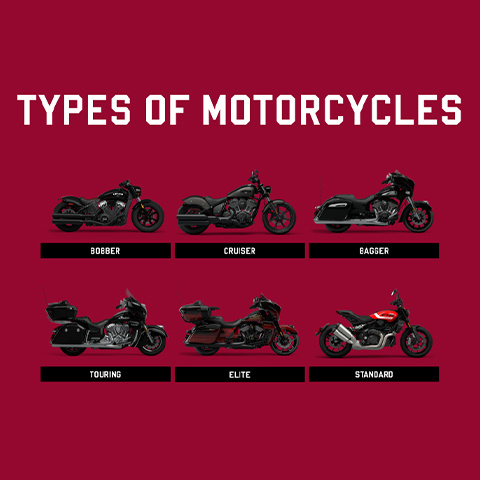The Definitive Guide to Motorcycle Boots
The Definitive Guide to Motorcycle Boots
Blog Article
The smart Trick of Motorcycle Boots That Nobody is Discussing
Table of ContentsSome Ideas on Motorcycle Boots You Need To KnowThe Of Motorcycle BootsAll about Motorcycle BootsMotorcycle Boots - An OverviewMotorcycle Boots - The FactsFascination About Motorcycle Boots
Motorcycle parts and systems for a motorbike are crafted, produced, and set up in order to create bike designs with the wanted efficiency, aesthetics, and price. The crucial components of modern-day motorcycles are offered listed below. The chassis of a motorbike includes the frame and suspension, in addition to the front forks, of the vehicle.Carbon fibre, titanium, and magnesium are utilized in a couple of really costly personalized frameworks. The structure includes the head tube that holds the front fork - motorcycle boots and allows it to pivot. Some motorcycles include the engine as a load-bearing stressed out member; this has been used throughout motorcycle background yet is now becoming more typical.
It was extensively out of favor and generally regarded as a negative idea at the time. It has actually given that acquired some prestige in the modern-day custom bike globe also due to the fact that of the area financial savings it can afford and the recommendation to an earlier era.
Though any type of tank for gas might be so called, the term is usually related to component of an engine system in which the gas is saved and moved (fuel pump) or released (pressurized gas) right into an engine. A motorcycle fork is the part of a motorbike that holds the front wheel and enables one to steer.
Motorcycle Boots for Beginners
The combination of rake and trail identifies how stable the motorcycle is. motorcycle boots. The 'fork' on a motorbike includes multiple elements. The three-way trees (additionally called yokes) hold the fork tubes (which include the fork springs), and are attached to the neck of the structure by the guiding stem.

, which requires both lubrication and adjustment for elongation (stretch) that occurs with wear. The lube is subject to being tossed off the fast-moving chain and results in gunk and dirt build-up. Chains do degrade, and extreme wear on the front and back sprockets can be harmful.
Standard roller chain-drives suffer the potential for vibration, as the efficient span of activity in a chain and sprocket combination constantly changes during the change ("chordal activity"). If a drive gear turns at continuous RPM, then the chain (and the driven sprocket) needs to speed up and decelerate frequently. Most chain-driven motorcycles are fitted with a rubber bushed back wheel center to eliminate this resonance concern.
These chain oilers differ in refinement, yet all try this include dramatically to the life of the chain. The personalized of lubing by submersing the chain in a tin of warm grease ceased in the very early 1970s, when most chains had rubber "O'-rings. The original Suzuki RE5 of 1975 featured a rear chain oiler, but the 1976 version had a covered chain, and its oiler was erased as "unnecessary".
Getting The Motorcycle Boots To Work
They are not as durable when subjected to high horsepower as a chain. You can not change the size and change final drive ratios as quickly as chains. And require larger pulleys compared to chain sprockets to obtain a reliable final drive ratio.
A shaft-drive is normally totally enclosed; the aesthetic sign is a tube expanding from the rear of the transmission to a bell housing on the rear wheel. navigate to these guys Inside the bell housing a bevel gear on the shaft companions with one more on Find Out More the wheel place. This plan is superior in terms of noise and tidiness and is basically maintenance-free, with the exemption of periodic liquid adjustments.
The added gear sets are a source of power loss and included weight. Essentially all high-performance racing motorcycles use chain-drive due to the fact that they are the most mechanically effective transmitting power to the back wheel.

Little Known Facts About Motorcycle Boots.
One of the most important attribute of any kind of tire is the call patch, the little area that is in call with the roadway surface while riding. There are tires made for motorcycle, touring, sporting activity and cruiser bikes. Dust bike tires have knobbly, deep footsteps for optimum grasp on loosened dirt, mud, or crushed rock; such tires tend to be much less steady and noisier on smooth surfaces.
Touring tires are normally made of a tougher rubber substance for higher longevity, these might last much longer but have a tendency to give much less outright hold contrasted to sporting activities tires at optimum operating temperature levels. Visiting tires typically provide a lot more grip at reduced temperature levels and can be much more suited to riding in chilly or winter months problems where a sporting activity tire may never ever reach its optimum operating temperature level.
These often tend to have more powerful sidewalls as they are generally fitted to much heavier makers. Motorsport or competing tires offer the highest possible of levels of grasp. Because of the heats at which these tires typically operate, use outside an auto racing environment is risky, normally these tires do not reach their maximum temperature which offers less than optimal grip.
Rumored Buzz on Motorcycle Boots

There are lots of brake-performance-enhancing aftermarket parts offered for a lot of motorbikes, including brake pads of differing substances and steel-braided brake lines.
Report this page